Description
The BEC3 apparatus is a third-generation experiment, intended to allow for easy manipulation of sodium Bose-Einstein condensates (BEC). These BEC's are moved with optical tweezers from the main production chamber into the auxiliary "science chamber." Once in the science chamber, condensates are loaded into magnetic and optical microtraps for further study. The science chamber provides flexibility in experimental design and the possibility for rapid cycling of experiments without compromising the vacuum in the main production chamber, which is essential for BEC production.
Here is a description of the apparatus (parts of Ananth Chikkatur's Thesis) (pdf, 1.7 MB). In 2007, the experiment was upgraded to have the capability of producing ultracold clouds of both fermionic lithium-6 and bosonic sodium-23. This allows us to study various quantum phase phenomena with fermions or Bose-Fermi mixtures. We are preparing for optical tweezer transport of the Na+Li mixture into our science chamber, which will allow maximum optical access for various optical lattice experiments.
Open House Visit.pdf
Our Hardware
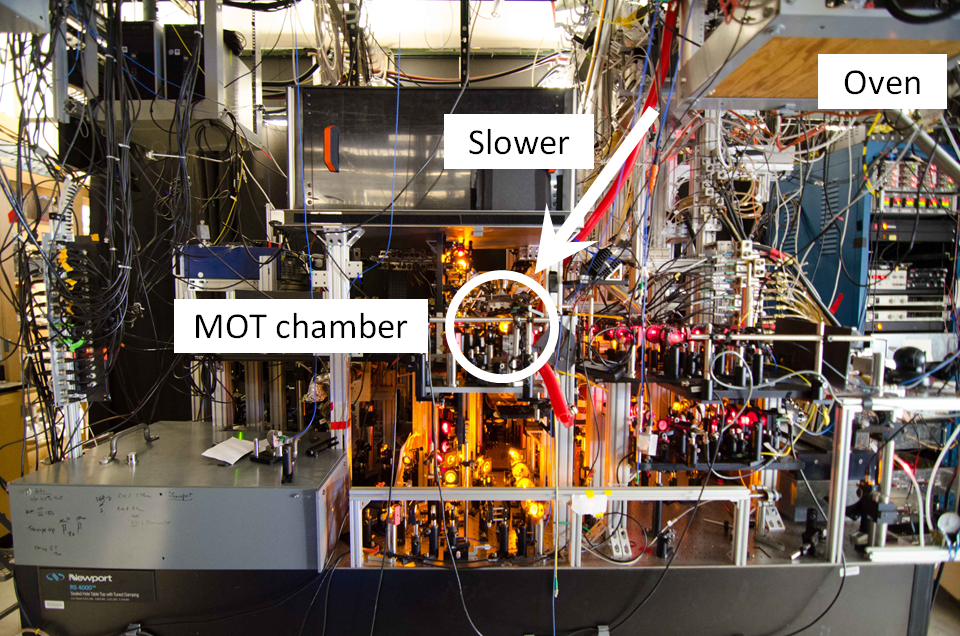
| Main Experiment Table
Our ultracold atoms of sodium and lithium are produced here. They begin as hot gases at >300 degrees Celsius in a dual-species oven. Both types of atoms travel down a Zeeman slower and are captured by overlapping magneto-optical traps (MOT) consisting of yellow and red lasers tuned to sodium and lithium transition frequencies respectively. After being cooled to micro-Kelvin temperatures in the MOT, our atoms are transferred into a magnetic trap and evaporatively cooled to nano-Kelvin temperatures. |
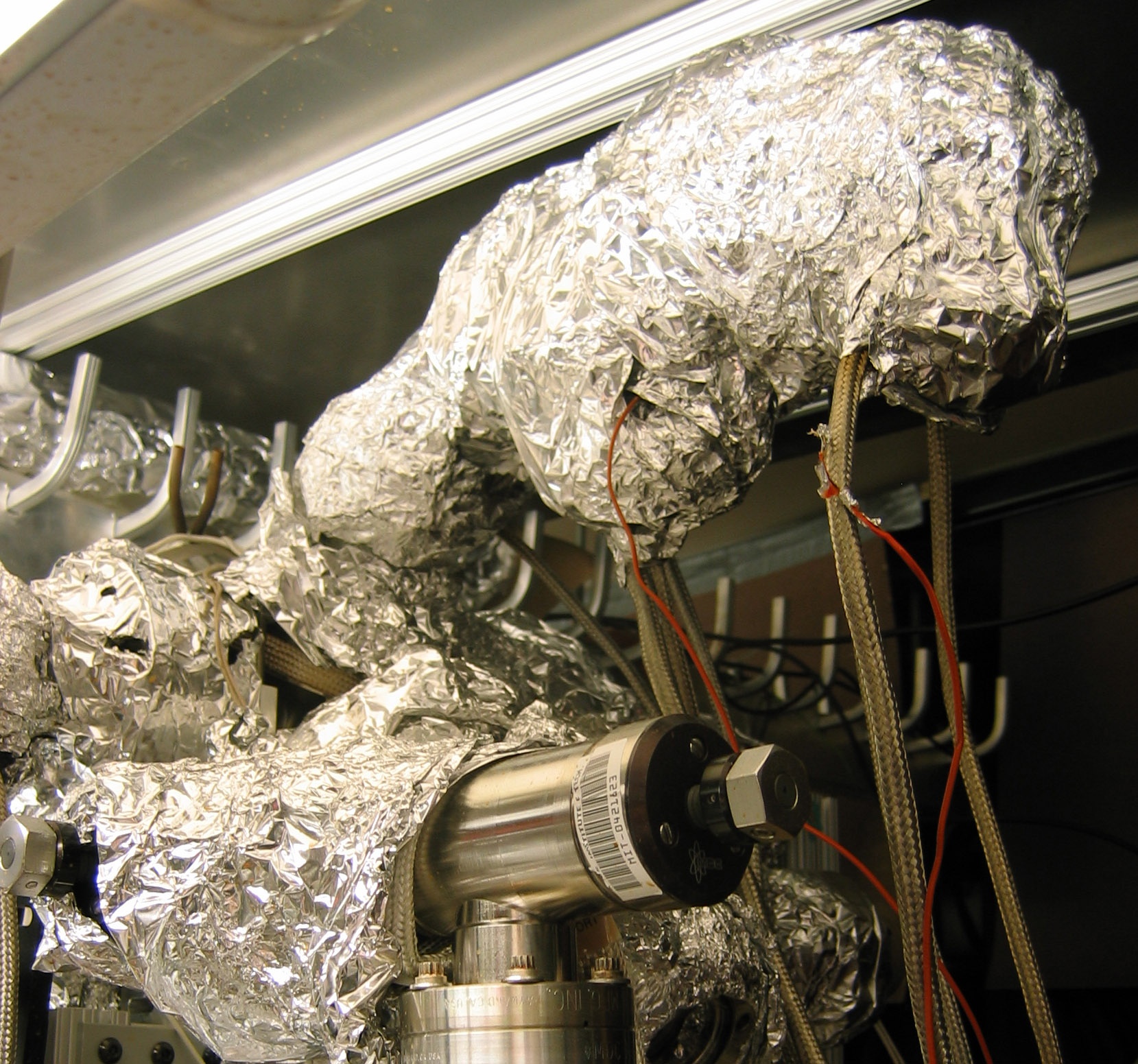
| Dual-Species Oven
The oven is located in the top right corner of this photo. It is the contraption with the two distinct bumps and wrapped in aluminum foil. In the lab it is located at the very top of our experimental apparatus, at about the height of a basketball net. The foil-covered bumps are heated cups which contain metallic samples of sodium (right) and lithium (left) respectively. These cups are heated to >300 degrees Celsius, and the high-thermal-velocity dual-species atomic vapour exit the oven through a cm-sized nozzle to form a roughly collimated atomic beam, which continues into our Zeeman slower. |
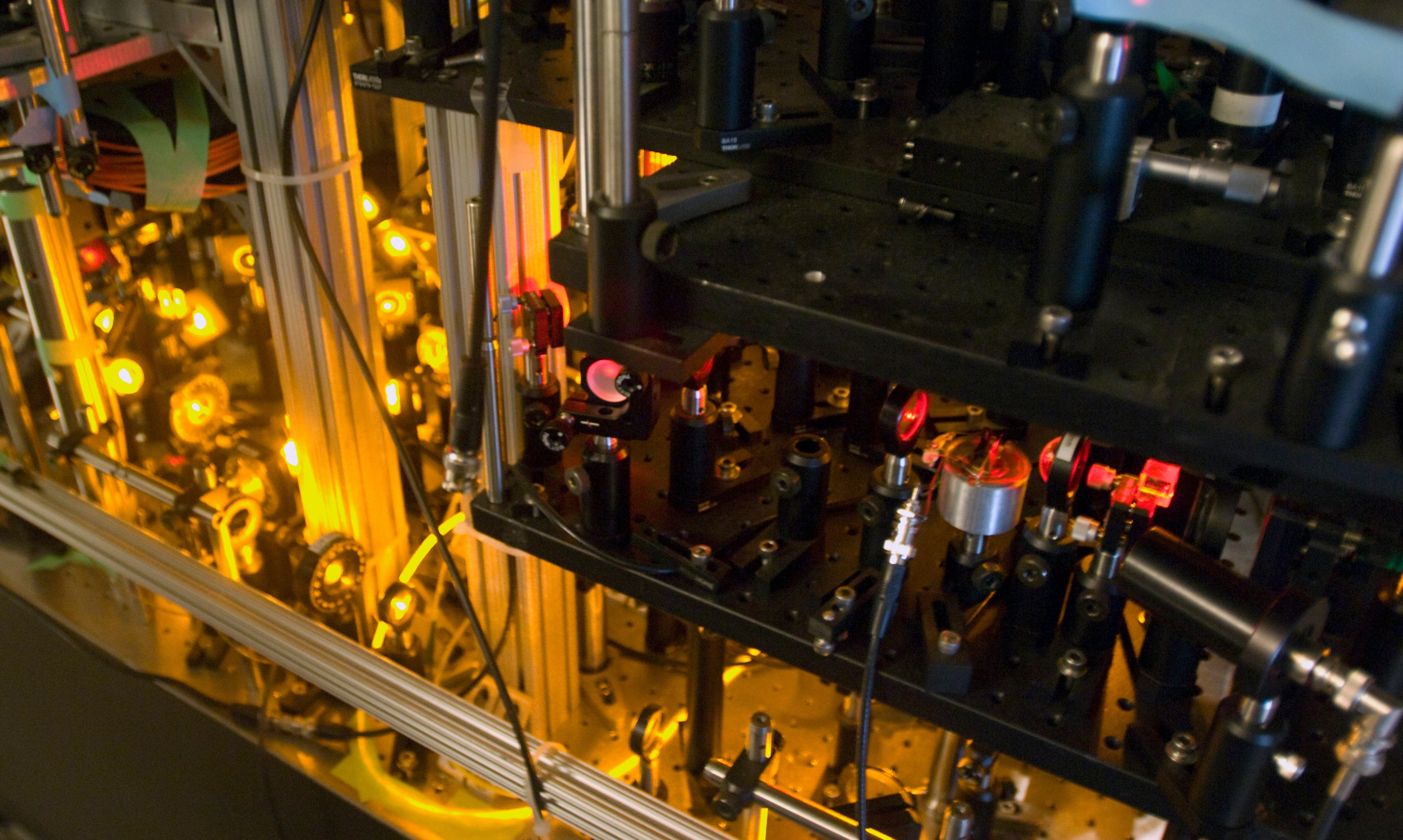
| Optical Setup for Magneto-Optical Trap (MOT)
The laser beams required to form our MOT are produced on separate laser tables and delivered to the main experiment table by optical fibers. Yellow light for sodium atoms is produced by continuous wave visible fiber laser from MPB, which is seeded by a 25 mW Toptica's Tunable diode laser DL pro. Red light for lithium atoms is produced by a set of laser diodes and a New Focus tunable laser amplifiered by a tapered amplifier. The lasers are maintained at a fixed reference frequency by locking to the absorption spectra of a vapour cell filled with either sodium or lithium atoms. Additional, predetermined frequency shifts to produce the various laser beams required for cooling, pumping, and imaging are achieved by sending light through acousto-optical or electro-optical modulators. |
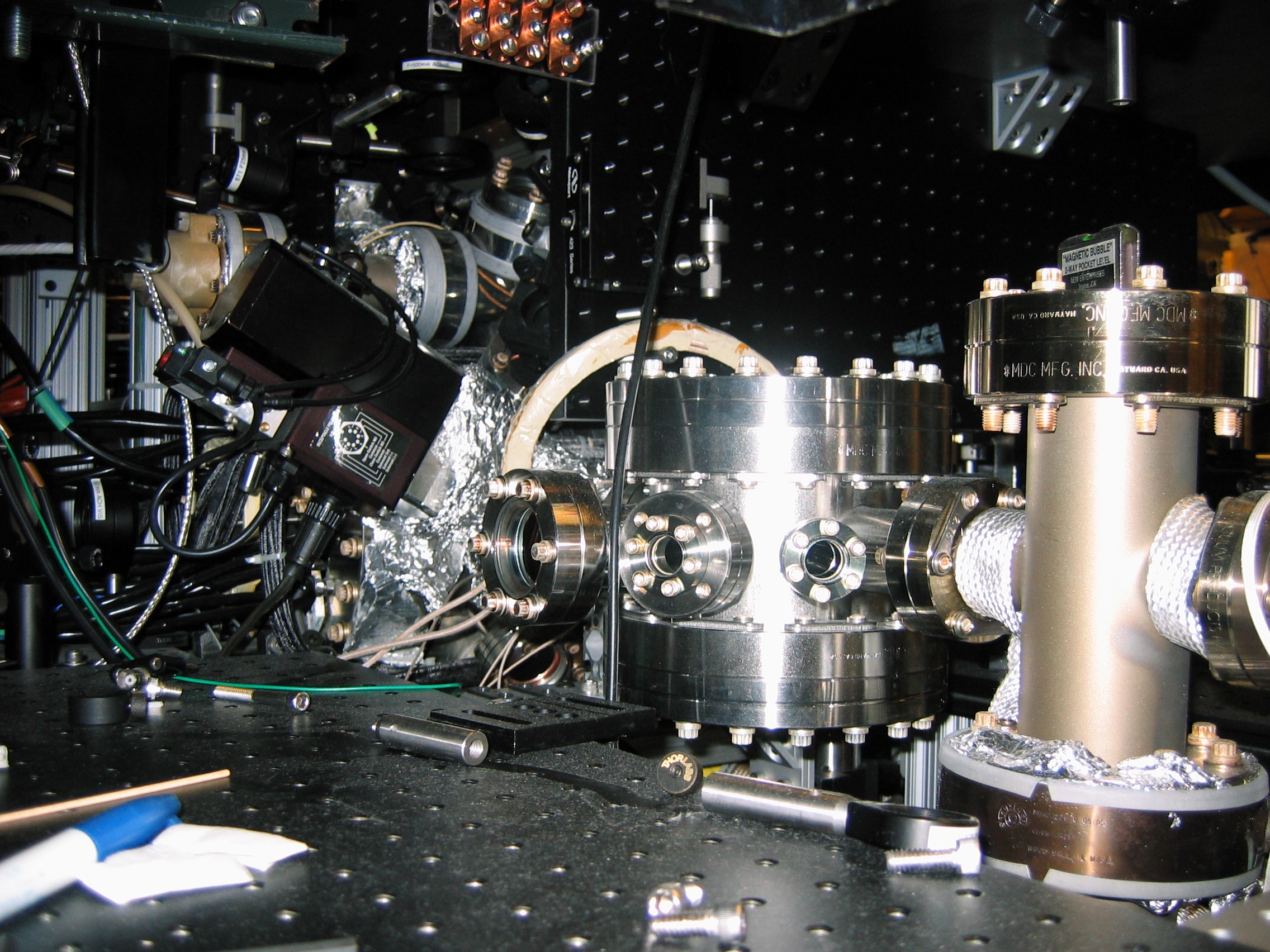
| Science Chamber
All of our scientific experiments are currently being done in the main vacuum chamber, in which our laser beams intersect to form the MOT. We also have the capability to do experiments in a separate "Science Chamber." Atoms can be transferred between these two chambers by translating the focus of an optical dipole trap. |
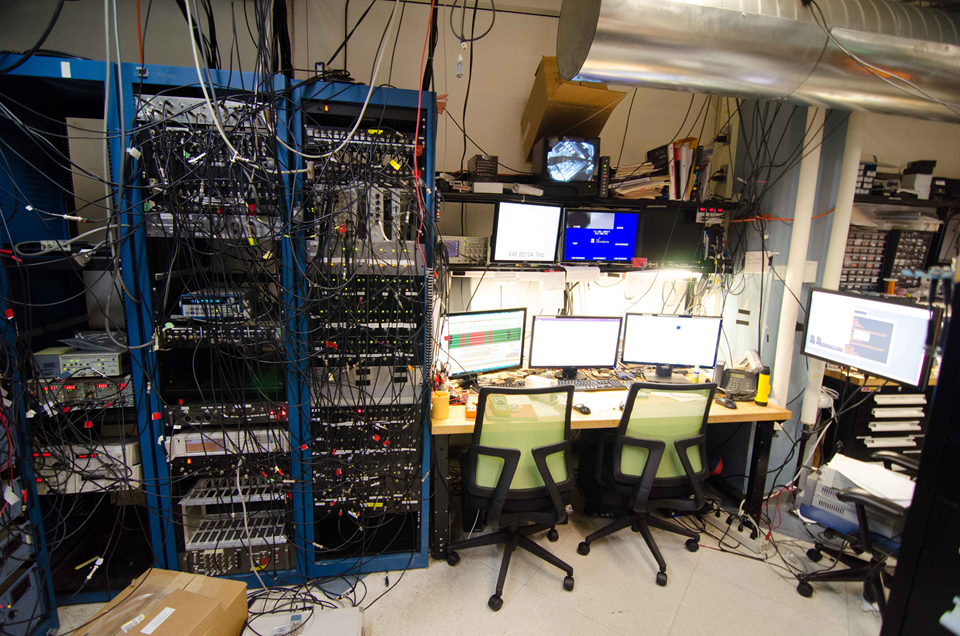
| Control Station
The experiment is controlled by a central computer, which connects to a National Instruments chassis to generate a large number of digital and analog signals with precise timing. In total, we need about 50 different digital channels and 20 analog channels, with some time steps as long as 10 seconds and others in the microsecond range. Several other computers are also needed for capturing camera images, monitoring the temperature of magnetic coils in the experiment, watching random YouTube videos of interest, etc. |




